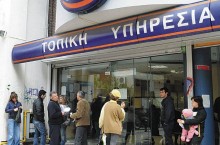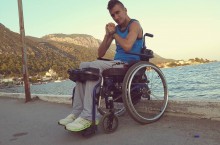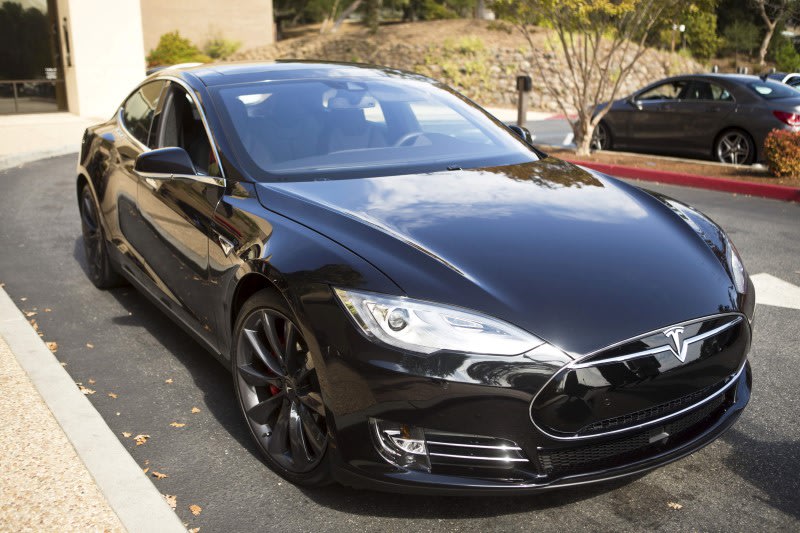Οι αρμόδιες υπηρεσίες στις ΗΠΑ έχουν βάλει στο μικροσκόπιό τους την πρώτη περίπτωση θανάτου οδηγού ενός ηλεκτρικού αυτοκινήτουTesla, ο οποίος είχε αφήσει τον έλεγχο του οχήματος στον αυτόματο πιλότο και αυτό συγκρούσθηκε με ένα φορτηγό.
Οι αρχές, σύμφωνα με το BBC και το πρακτορείο Ρόιτερς, διερευνούν τη συμπεριφορά του συστήματος Autopilot τηςTesla, το οποίο αλλάζει αυτόματα λωρίδες κυκλοφορίας και παίρνει διάφορες άλλες πρωτοβουλίες (επιτάχυνση, φρένο κ.α.), εφόσον το έχει επιτρέψει ο οδηγός, ανάλογα με την κίνηση στο δρόμο.
Η Tesla, με ανακοίνωσή της, παραδέχθηκε ότι το σύστημα αυτόματου πιλότου «απέτυχε να αναγνωρίσει τη λευκή πλευρά του φορτηγού που πλησίαζε, με φόντο ένα έντονα φωτισμένο ουρανό» και έκανε λόγο για «τραγική απώλεια».
Το δυστύχημα, που συνέβη στη Φλόριντα σε μια ηλιόλουστη μέρα, είχε ως συνέπεια τον θάνατο του 45χρονου οδηγού του μοντέλου S της Tesla, ενώ ο οδηγός της νταλίκας δεν έπαθε τίποτε. Το άσπρο φορτηγό που προηγείτο, έστριψε αριστερά σε μια διασταύρωση, αλλά το αυτοκίνητο δεν έκοψε ταχύτητα, χτύπησε στη νταλίκα, βγήκε από το δρόμο και έπεσε πάνω σε ένα στύλο.
«Ούτε το Autopilot ούτε ο οδηγός αντιλήφθηκαν τη λευκή πλευρά του φορτηγού και έτσι το όχημα δεν φρέναρε» ανέφερε η εταιρεία, οι μετοχές της οποίας σημείωσαν υποχώρηση μετά το συμβάν και τη σχετική διερεύνησή του από τις Αρχές.
Η Tesla ανέφερε ότι μέχρι σήμερα τα οχήματά της που διαθέτουν το Autopilot, έχουν διανύσει 130 εκατομμύρια μίλια χωρίς κάποιο πρόβλημα ασφάλειας και υποστήριξε ότι το δυστύχημα οφειλόταν σε «υπερβολικά σπάνιες περιστάσεις».
Οι αρχές εξετάζουν κατά πόσο υπήρξε δυσλειτουργία του συστήματος αυτόματου πιλότου. Αν διαπιστωθεί κάτι τέτοιο, η εταιρεία μπορεί να υποχρεωθεί σε ανάκληση οχημάτων για να προβεί στις αναγκαίες τεχνικές διορθώσεις. Αν όντως αυτό συμβεί, δεν αποκλείεται η Tesla να προβεί σε ασύρματη αναβάθμιση του λογισμικού του μοντέλου S, χωρίς να χρειασθεί να ανακαλέσει τα ίδια τα οχήματά της.
Το περιστατικό μπορεί να αμαυρώσει τη φήμη της αυτόνομης τεχνολογίας στα αυτοκίνητα, καθώς η ασφάλεια αποτελεί την πρώτη προτεραιότητα για τις κυβερνήσεις, για τους οδηγούς και ευρύτερα για το κοινό.
To Autopilot εμφανίσθηκε πέρυσι τον Οκτώβριο και μέχρι σήμερα έχει εγκατασταθεί σε περίπου 25.000 ηλεκτρικά σεντάν S, καθένα από τα οποία κοστίζει τουλάχιστον 66.000 δολάρια. Ο ίδιος ο επικεφαλής τηςTesla Έλον Μασκ είχε εξ αρχής συστήσει στους οδηγούς να βρίσκονται σε εγρήγορση, όταν χρησιμοποιούν το αυτόματο σύστημα, καθώς, όπως είχε πει, «ο οδηγός δεν μπορεί να αποποποιείται κάθε ευθύνης».
Στη νέα ανακοίνωσή της, η εταιρεία επισημαίνει ότι «το Autopilot βελτιώνεται συνεχώς, αλλά είναι μια νέα τεχνολογία, που δεν είναι τέλεια και βρίσκεται ακόμη σε δοκιμαστική φάση».
Tesla disclosed the federal inquiry in a blog post on its website, the company’s preferred method of communicating material information about its operations. Tesla says it included numerous disclaimers about the limits of its Autopilot technology to owners who downloaded the software that activated the feature. Whenever drivers engaged Autopilot, for instance, the car flashed a warning advising that they should “be prepared to take over at any time.” Lawyers for car companies are highly skilled at anticipating everything that can go wrong in cars, and making sure owners agree to terms that mitigate liability. Tesla may very well avoid any legal liability in the Brown case, especially if it turns out Brown was using Autopilot under conditions for which it wasn’t designed.
‘Public beta’
But Tesla has gone much farther than any other automaker in promoting its self-driving technology, and branding it as a breakthrough – which it’s not, really. “Autopilot” is a term borrowed from the aviation industry, and it refers to planes that are flown almost entirely by computers except during takeoff, landing and unexpected events at altitude. Autonomous technology for cars is nowhere near as advanced as it is for airplanes, which Tesla itself acknowledges, in a fine-print kind of way.
While playing up Autopilot when it was launched last October, Tesla CEO Elon Musk said, “we still think of it as a public beta – so we want people to be quite careful.” Other automakers are less willing to test “beta” versions of technology – Silicon Valley-speak for new software still in development – on actual customers. And decades of litigation have persuaded automakers to underplay rather than overplay the virtues of new technology, especially when safety is a factor.
Tesla’s Autopilot feature, which it markets as a $2,500 software upgrade, allows the Model S to speed up, slow down and change lanes with no input from the driver other than setting the desired maximum speed and tapping the turn signal to trigger a lane change. Feet come off the pedals, and hands come off the steering wheel. The driver can literally read a book.
All the big automakers possess the same technology, however, and it only works on roads with clearly marked lanes and a predictable flow of traffic, when nothing else goes wrong. Yet anybody with a driver’s license knows that something is always liable to go wrong: kids or animals jump out from nowhere. Blinding sun floods the cockpit. Rain or snow makes it impossible to see, while the wheels beneath spin.
The cameras, lasers, sonars and other sensors that gather the info allowing computers to make driving decisions still aren’t as good as ordinary human drivers are at reacting to the unexpected craziness that occurs on America’s roads. At a conference in Boston earlier this year, MIT engineering professor John Leonard showed video footage of several things self-driving technology still can’t master, such as a police officer waving traffic forward through a red light, which contradicts coding that says cars should stop at red lights.
At the same conference, Gil Pratt, CEO of the Toyota Research Institute, said, “We don’t have any autonomous car yet where the car, on average, is better than a person.” Just about all the experts agree that while sensors and computers might be better at piloting a vehicle on a predictable route with no surprises – plus, computers don’t drink, do drugs or get emotional – technology still struggles to make good split-second decisions when something that’s not in the database occurs. Bright light, driving rain, snow and confusing construction detours still confound automotive sensors.
Earlier this year, the federal government established standards for different levels of autonomous driving. Level 0 is what we’re all used to – complete driver control. The highest autonomous standard, Level 6, is a futuristic vehicle, perhaps 20 or 30 years in the future, that is capable of piloting itself under every conceivable circumstance with no human input, ever. Tesla’s Autpilot is considered Level 2 technology – which means the car can drive itself under some circumstances, but the driver must be ready to take control promptly.
The traditional automakers are impressed with the fact that Tesla has brought compelling products to market against steep odds. But they’re also dismissive of Musk’s penchant for hype and his habit of claiming leadership on technologies that Big Auto has been developing for decades, and rolling out cautiously. A safety expert for Volvo, which probably focuses more on safety than any other automaker, told the Verge in April that Tesla’s Autopilot feature is “an unsupervised wannabe…. it gives you the impression it’s doing much more than it is.”
Crash investigations typically take months, and sometimes lead to unexpected conclusions. But early evidence suggests that Brown, the deceased driver in the Florida accident, surrendered too much control to his vehicle, which failed to make the right decision under circumstances confusing to a computer. Tesla says a “brightly lit sky” contributed to the Autopilot’s decision not to apply the brakes, even though a truck stood between Brown’s vehicle and safety. That’s not autopilot, that’s a terribly mistaken pilot. Had the driver been piloting the car, he almost certainly would have made a better decision.
Rick Newman’s latest book is Liberty for All: A Manifesto for Reclaiming Financial and Political Freedom. Follow him on Twitter: @rickjnewman.
























